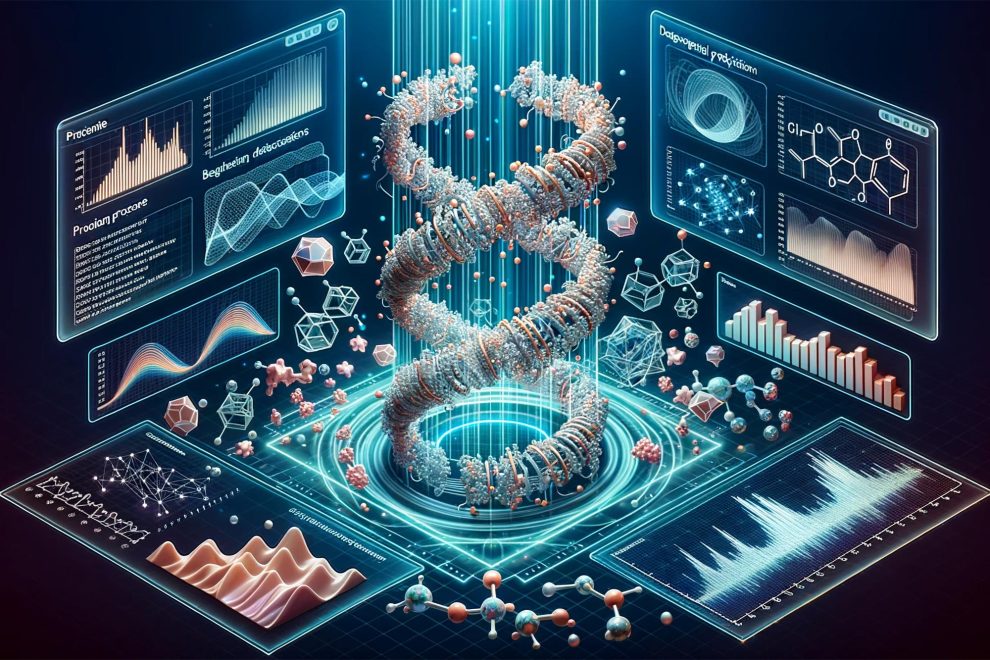For decades, scientists have been trying to unravel the complex process of protein folding. Understanding how chains of amino acids twist and fold into intricate three-dimensional shapes could open doors for transformative advances in drug discovery, healthcare, and beyond.
But progress was slow. Traditional techniques like X-ray crystallography remained time-consuming, expensive, and limited in scope. We knew the amino acid sequence held the key, but predicting the actual folding process seemed near-impossible.
Until artificial intelligence (AI) changed the game.
Revolutionary AI systems like DeepMind’s AlphaFold have sparked a new era, not just in biology, but across scientific realms. Accurately predicting protein structures is now a reality, lighting a path toward materials breakthroughs we never imagined possible.
The Historical Hunt for the Protein Folding Solution
To appreciate the magnitude of recent AI achievements, it helps to understand the historical challenges of protein folding. Proteins perform countless essential biological functions, from forming tissues to powering muscle contraction. Their specific 3D shape determines what they can do.
As Christian Anfinsen proposed in his pioneering “thermodynamic hypothesis” in 1957, the amino acid sequence should fully dictate the folding process. If we could predict sequences into structures, a world of possibility would open up.
However, solving this puzzle with 20th century tools seemed unlikely. Experimental techniques like X-ray crystallography offered detailed folded structures but were arduously slow. And they only applied to proteins that could form crystals, limiting scope.
Protein simulation software provided an alternative approach. But computational demand for modeling intricate protein dances remained prohibitively high for decades. Without sufficient reference data, accuracy was also insufficient for serious use.
The AI Revolution in Protein Folding
This logjam began clearing with the meteoric rise of artificial intelligence. AI-based protein folding tools like AlphaFold analyze immense datasets on known protein structures. By detecting subtle patterns within this data, they can make shockingly accurate predictions even for entirely new sequences.
AlphaFold stunned the biology community by winning the prestigious CASP protein structure prediction tournament in 2020. Its ability to model complex protein shapes, often outperforming traditional techniques, signaled a seismic shift. Scientists could now bypass years of experimentation by simply entering an amino acid sequence into AlphaFold.
This breakthrough sparked a gold rush in the field. Dozens of labs and startups are now racing to explore applications across disciplines like:
- Drug discovery
- Enzyme engineering
- Personalized medicine
But the tremors extend beyond biology and medicine. As we’ll discover next, protein folding AI could trigger an earthquake in the materials science realm as well.
Protein Prediction Powers Materials Breakthroughs
Properly folded proteins demonstrate astounding properties. Their strength-to-weight ratio exceeds steel. Silk demonstrates incredible toughness, while cells routinely repair and replicate protein structures. And proteins act as highly efficient enzymes and molecular factories.
In short, protein folding unlocks all sorts of design inspiration for next-gen materials. And AI predictive power accelerates this translation from biological blueprint into physical applications.
Here are five ways this one-two punch combination of protein science and AI could reshape the materials landscape:
1. Bio-Inspired Materials and Manufacturing
By predicting protein folding pathways, AI allows us to decode nature’s manufacturing secrets. We can now translate biological self-assembly approaches into industrial fabrication processes.
For example, researchers at Penn State University recently described an AlphaFold-inspired method for organizing collagen proteins into highly ordered structures. Such precisely organized building blocks could enable customized bio-materials for applications like regenerative medicine.
Understanding protein folding mechanics also unlocks new functional materials optimized for lightweight strength, self-healing capabilities, and extreme environments. Future biological materials may see proteins perform mechanical roles in place of traditional polymers and plastics.
2. Accelerated Enzyme Engineering
Enzymes power most biological manufacturing and reactions. And they perform these functions with precision and efficiency chemists struggle to match.
However, identifying or custom-engineering useful enzymes often relies on blind trial-and-error. Now, AI tools can rapidly predict how amino acid changes alter 3D enzyme shapes to enhance specific activities.
For example, new enzymes designed via AI could boost biofuel production or convert waste into value-added chemicals. Synthetic biology companies like Arzeda and EnzymeBio are betting big on this prospect.
3. Novel Protein Materials and Properties
Nature offers a wide but finite protein parts bin. AI expands it, allowing us to explore artificial proteins with new shapes and features.
With guiding input data on desired material behaviors, we can perform AI- simulations to discover entirely new protein-based polymers and composites. This unlocks custom-crafted properties like improved conductivity, self-healing, or temperature responsiveness unbounded by biological limitations.
Researchers have already described AI-designed proteins for goals like signaling cell growth or transporting electrons. But radical new attributes likely await discovery.
4. Accelerated Materials Discovery
Historically, materials development involved lengthy trial-and-error experimental efforts. AI simulation streamlines this process by rapidly screening billions of candidates.
For example, AI tools can now search potential protein variant libraries to predict which ones meet specific mechanical property targets. This allows rapid virtual prototyping before pursuing only the most promising cases in the lab.
By making the discovery process 10X or 100X more efficient, AI enables rapid iteration towards the most effective designs. And it allows researchers to pursue more moonshot ideas since the workflow no longer bottlenecks on physical fabrication and testing.
5. Sustainable Alternatives to Plastics
Petroleum-derived plastics dominate modern society due to useful properties like durability, flexibility and low cost. But dealing with plastic waste and pollution has become an environmental crisis.
Proteins present a renewable, biodegradable and non-toxic alternative starting point. And AI makes rapid development of eco-friendly protein replacement materials possible.
Imagine packaging, fabrics, or construction elements made from replenishable collagen harvested from food industry waste. We could be far closer thanks to AI acceleration.
When AI Meets Protein Power, No Limits Exist
The twin engines of computing power and big data are propelling AI capabilities we could barely envision just years ago. Rapid improvements in protein folding prediction highlight this trajectory.
As tools like AlphaFold, RoseTTAFold and trRosetta expand the solution space, a new playing field opens up. Harnessing AI to enhance nature’s ingenuity will drive advances limited only by our imagination.
So beyond crucial healthcare and sustainability breakthroughs, we may discover novel protein-based processors and sensors. Or ultra-efficient molecular factories that convert air and sunlight into materials. What else might this irresistible combination yield in the coming decades?
We’ve only glimpsed the possibilities so far. But the door is open for AI and protein folding to reshape our physical world.
















Add Comment